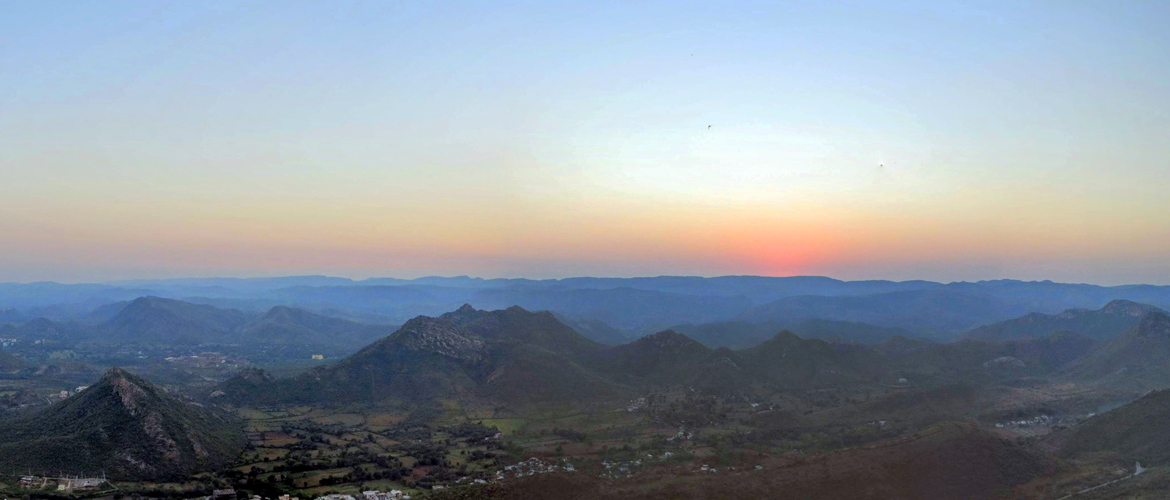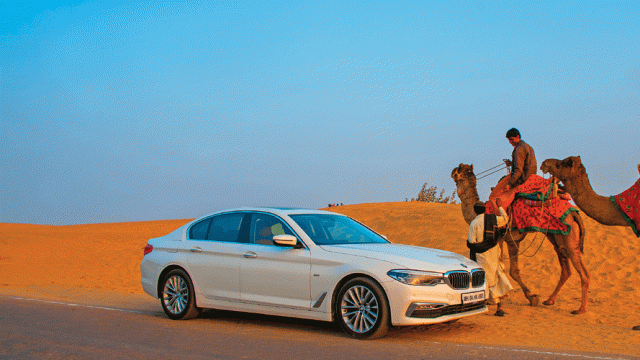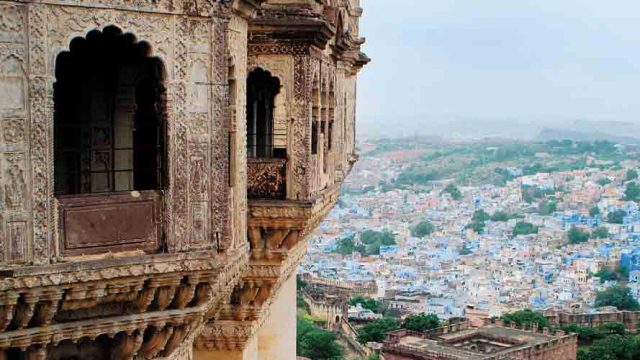I sipped on chai and watched the sun float above the ramparts of Jaipur’s Nahargarh Fort. Clouds
Bells jingled in the distance reminding us that our camels were not far away. These faint chimes were the only sounds accompanying us as we meandered along the sands of the Thar. The sun used the sky as its canvas, filling it with a yellow afterglow even after it disappeared. This was the signal for the night desert to come to life. Dung beetles surfaced from beneath the sand and scurried to and fro, their ambitions lost on us as we tried to avoid them. A ghostly mouse scampered by and dove into the sand next to my feet. But once I lifted my gaze from the ground, I was surrounded by a vast emptiness of a kind I’d never experienced in India. Above us, the sky lit up with its first star: Venus.

Udaipur’s Monsoon Palace, an unfinished passion project of a Mewar Maharajah, is high atop the Aravalli Hills and is only accessible by jeep. The jeeps-only rule seemed excessive but once our ride began, it became abundantly clear why. A narrow road, blind turns and enough swerves to keep away from oncoming vehicles. But then the sight that met us took our breath away. The lush green hills and lakes of Udaipur were laid out in all their glory, an incongruous sight in a state renowned for its desert and heat. A low parapet wall cut the Monsoon Palace off from the hills, and this was our seat for the next hour as we watched a majestic sunset.
Udaipur is the city of lakes and a well-timed boat ride on the Pichola allowed us to take in the sunset from the middle of one. The magnificent facade of the City Palace basked in the sun’s rays. The water shimmered in gold, much like the royal insignia of the sun I would see the next day deep within the Palace’s grounds.

The terrace of the Kuku Coffee Shop, inside the living fort of Jaisalmer, had no other patrons when we arrived. The friendly owner turned his stereo system over to us. L Shankar’s Abheri played in the background as we devoured Ghotuva, a divine yellow sweet bathed in ghee.

Modernity had only lightly grazed Jaisalmer, and the sight of the sleepy town winding up for the day was as relaxing as the music. The sun, growing darker as it approached the horizon, slowly began to resemble the Ghotuva in our hands.

An auto-rickshaw whirred by behind us. Somewhere in the distance, a mosque started its evening prayers. Stretched before us was a glorious desert valley, filled with bushes and trees seemingly growing out of sheer rock. Rao Jodha Desert Rock Park, in Jodhpur, is a miracle. Beyond the park, blue buildings dotted the skyline of the Blue City. But the sky wasn’t blue. It was red; it was orange; it was pink; it was yellow.

The giant Mehrangarh Fortress was on our left, the sun saturating in orange what the Rajas of old had built in red. My thoughts turned to the thousands of sunsets the old fort must have seen. As kingdoms fell and empires took shape. As men rode out into the sun on their final battles. As princesses pressed their palms against its gates, their last action before sacrificing themselves on their husbands’ funeral pyre in a blaze as fiery red as the sun that just disappeared. Why these thoughts? Because that’s what sunsets do to you. Especially in Rajasthan – the land of the setting sun.
reader's submissions
Udaipur
Jaisalmer





